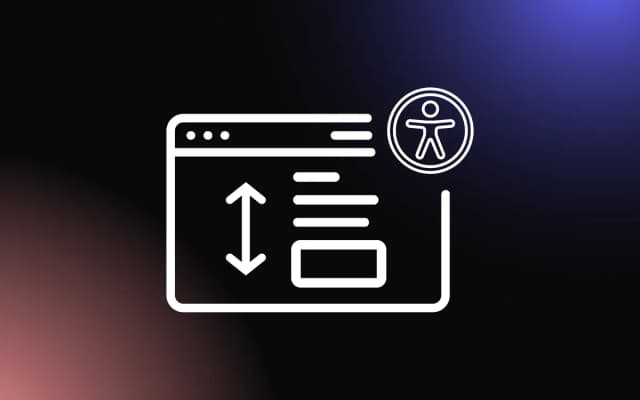
In the vast world of web design, typography stands as a silent yet powerful communicator. It's the voice of your website, whispering to your visitors, guiding them through your content, and shaping their perception of your brand.
Yet, for many beginners, the art of website typography remains a mystery, often overshadowed by more flashy design elements.
This article aims to demystify this crucial aspect of web design, offering a comprehensive guide to understanding and implementing effective typography on your website.
Understanding the Basics of Typography

Typography, while often overlooked, plays a crucial role in conveying information and creating a particular mood or aesthetic. It's an essential element of any design work, especially in the realm of web design.
What is Typography?
At its core, typography is the art of arranging type to make written language legible, readable, and appealing when displayed. It involves the selection of typefaces, point sizes, line lengths, line-spacing, and letter-spacing, as well as the adjustment of space between pairs of letters.
Typography encompasses everything from the font you choose to the spacing between letters. It's a form of communication, a way to convey information not just through words, but also through the visual representation of those words.
Why is Typography Important in Web Design?
Typography holds immense importance in web design for several reasons.
Firstly, it enhances readability and usability. Good typography guides the reader across the page in the correct flow and sequence, making the content more digestible and the website easier to navigate.
Secondly, typography plays a significant role in the overall appearance of the site. It can create a mood, evoke emotion, and set the tone for your website, all of which can impact how visitors perceive and interact with your content. For instance, a website for a law firm might use formal, straightforward typography to convey professionalism and reliability, while a website for a creative agency might use more playful and innovative typography to showcase creativity.
Lastly, typography can reinforce brand identity. The fonts, sizes, and colors you choose can all contribute to the overall impression visitors have of your brand. Consistent use of typography across all your brand's touchpoints can help build recognition and reinforce your brand's personality.
Key Elements of Website Typography

Website typography is a complex discipline that involves more than just choosing a font. It's a blend of artistic design and technical precision, all aimed at enhancing the user's experience. Here are some key elements to consider when working with website typography:
Typefaces and Fonts
The choice of typefaces and fonts is one of the most fundamental decisions in website typography. A typeface is a family of fonts, while a font is a specific style within a typeface. For example, Arial is a typeface, and Arial Bold is a font.
Choosing the right typeface can significantly impact the look and feel of your website. Serif typefaces, with their small decorative lines, often convey a sense of tradition and formality. Sans-serif typefaces, without these lines, tend to feel more modern and clean. Script typefaces can add elegance or creativity, but they should be used sparingly due to readability concerns.
Font Size and Line Spacing
Font size and line spacing are crucial for readability. The font size should be large enough to read comfortably on all devices, typically at least 16 pixels for body text on a website.
Line spacing, or the distance between lines of text, also affects readability. Too little spacing can make text feel cramped and difficult to read, while too much spacing can disrupt the flow of reading. A good rule of thumb is to set line spacing at around 1.5 times the font size.
Color and Contrast
Color plays a significant role in website typography. It can create mood, highlight important information, and guide the user's eye. However, it's essential to ensure sufficient contrast between the text color and the background color. Poor contrast can make text hard to read and strain the user's eyes. Tools like the Web Content Accessibility Guidelines (WCAG) contrast checker can help you ensure your text is easily readable.
Hierarchy and Scale
Hierarchy and scale in typography help guide the reader's eye and indicate the importance of different elements. Larger, bolder text typically signifies headings or important information, while smaller, lighter text is often used for body content or less critical information.
Establishing a clear typographic hierarchy can make your website easier to navigate and understand. This often involves defining styles for different heading levels (H1, H2, H3, etc.) and other text elements (body text, links, captions, etc.).
Font Pairing
Font pairing is a critical aspect of website typography, involving the selection of two or more fonts that complement each other on a page. This task requires an understanding of the characteristics of different fonts and aims to enhance the visual appeal and readability of your website. It helps establish a sense of harmony and balance, as well as a clear hierarchy between different types of content.
When pairing fonts, consider contrast and compatibility. Fonts should be distinct but not clashing. Common strategies include pairing fonts from the same family or combining serif and sans-serif fonts. The chosen fonts should align with your website's design, tone, and brand identity. While there are guidelines for font pairing, there's also room for creativity and experimentation.
Steps to Implement Effective Typography on Your Website

Typography is a critical component of web design, influencing both aesthetics and usability.
Here are five steps to help you implement effective typography on your website:
Step 1: Understand Your Brand and Audience
Before you start selecting typefaces or adjusting line spacing, it's crucial to understand your brand and your audience. Your typography should reflect your brand's personality and cater to your audience's preferences and needs.
For instance, a tech startup might opt for a modern, clean sans-serif typeface, while a luxury brand might choose an elegant serif typeface. Similarly, if your audience is older, you might need to use larger font sizes for readability.
Step 2: Choose the Right Typeface
Once you understand your brand and audience, you can choose a typeface that aligns with your brand personality and is suitable for your content.
Remember, legibility is key. Fancy typefaces might look interesting, but they can be hard to read, especially in long paragraphs. It's often recommended to stick to 2-3 typefaces on a website to maintain a consistent look and feel.
Step 3: Establish a Typographic Hierarchy
A typographic hierarchy helps guide your readers through your content by visually differentiating between elements like headings, subheadings, and body text. This can be achieved through variations in font size, weight (boldness), color, and spacing.
For example, headings should be larger and bolder than body text, and subheadings should be distinguishable from the main headings.
Step 4: Ensure Readability and Accessibility
Good typography is easy to read. This involves choosing an appropriate font size, line spacing, and line length. As a general rule, body text on a website should be at least 16 pixels, and line spacing should be around 1.5 times the font size.
Also, ensure there's sufficient contrast between your text and background colors to make your content accessible to all users, including those with visual impairments.
Step 5: Test and Adjust Your Typography
Finally, it's important to test your typography on different devices and screen sizes to ensure it works well in all scenarios. What looks good on a large desktop screen might not be readable on a small mobile device.
Be prepared to adjust your typography based on these tests to provide the best user experience.
Common Mistakes to Avoid in Website Typography

Typography is a critical aspect of web design, but it's also an area where mistakes can easily be made. These mistakes can impact your site's readability, user experience, and overall aesthetic. Here are three common mistakes to avoid in website typography:
Using Too Many Fonts
One common mistake is using too many fonts. While it might be tempting to use a variety of fonts to make different parts of your website stand out, this can lead to a cluttered and inconsistent design.
As a rule of thumb, stick to 2-3 typefaces for your website. This typically includes one typeface for headings and another for body text. If a third typeface is used, it can be for special elements like quotes or callouts. Remember, consistency is key in design, and this applies to your choice of fonts as well.
Neglecting Contrast and Spacing
Another common mistake is neglecting contrast and spacing. Contrast, particularly between text color and background color, is crucial for readability. If there's not enough contrast, your text can be hard to read, especially for users with visual impairments.
Similarly, appropriate spacing between lines (line spacing) and between letters (letter spacing) is essential for readability. Too little spacing can make text feel cramped, while too much can disrupt the flow of reading.
Ignoring Responsive Design
The third common mistake is ignoring responsive design. With the variety of devices and screen sizes today, it's essential that your typography works well on all platforms.
This means your text should be legible and well-spaced, whether it's viewed on a large desktop monitor or a small mobile screen. Ignoring responsive design can lead to a poor user experience for a significant portion of your audience.
Start Crafting a Visually Appealing Narrative
Mastering the art of website typography is a journey, one that requires practice, patience, and a keen eye for detail. It's about understanding the subtle interplay between typefaces, appreciating the power of spacing, and recognizing the importance of readability and responsiveness.
As you embark on this journey, remember that effective typography is more than just making text look good; it's about enhancing the user experience, conveying your brand's voice, and making your content accessible to all. With the insights and guidelines provided in this article, you're now equipped to explore the world of website typography and create designs that speak volumes.


